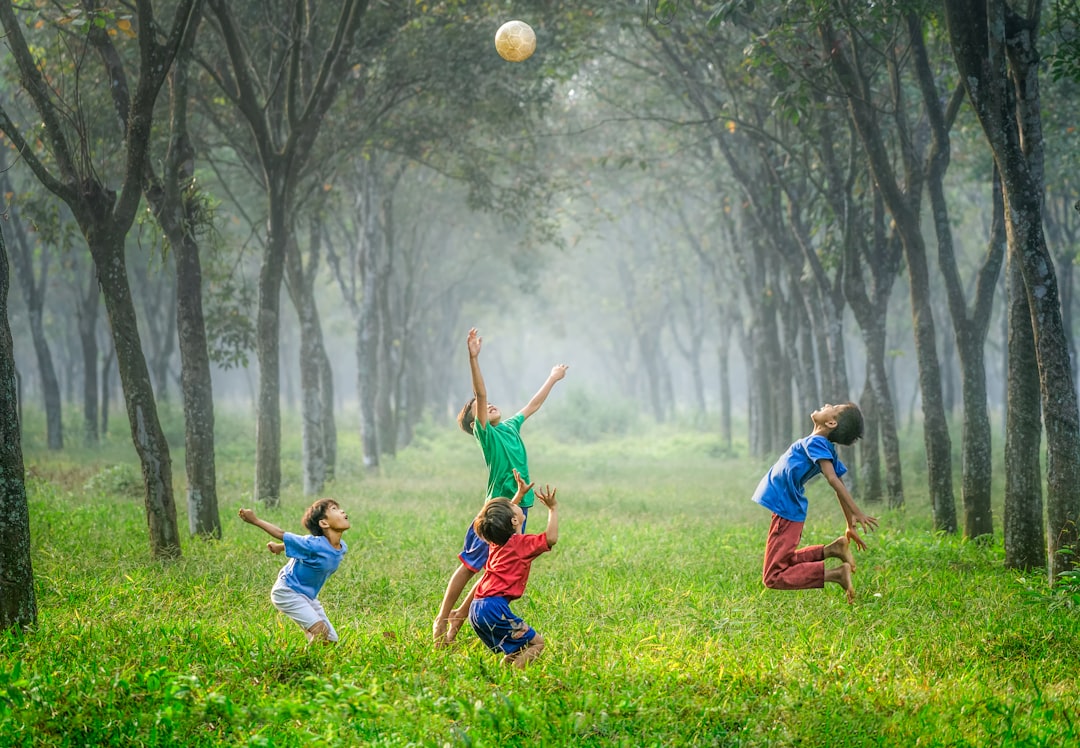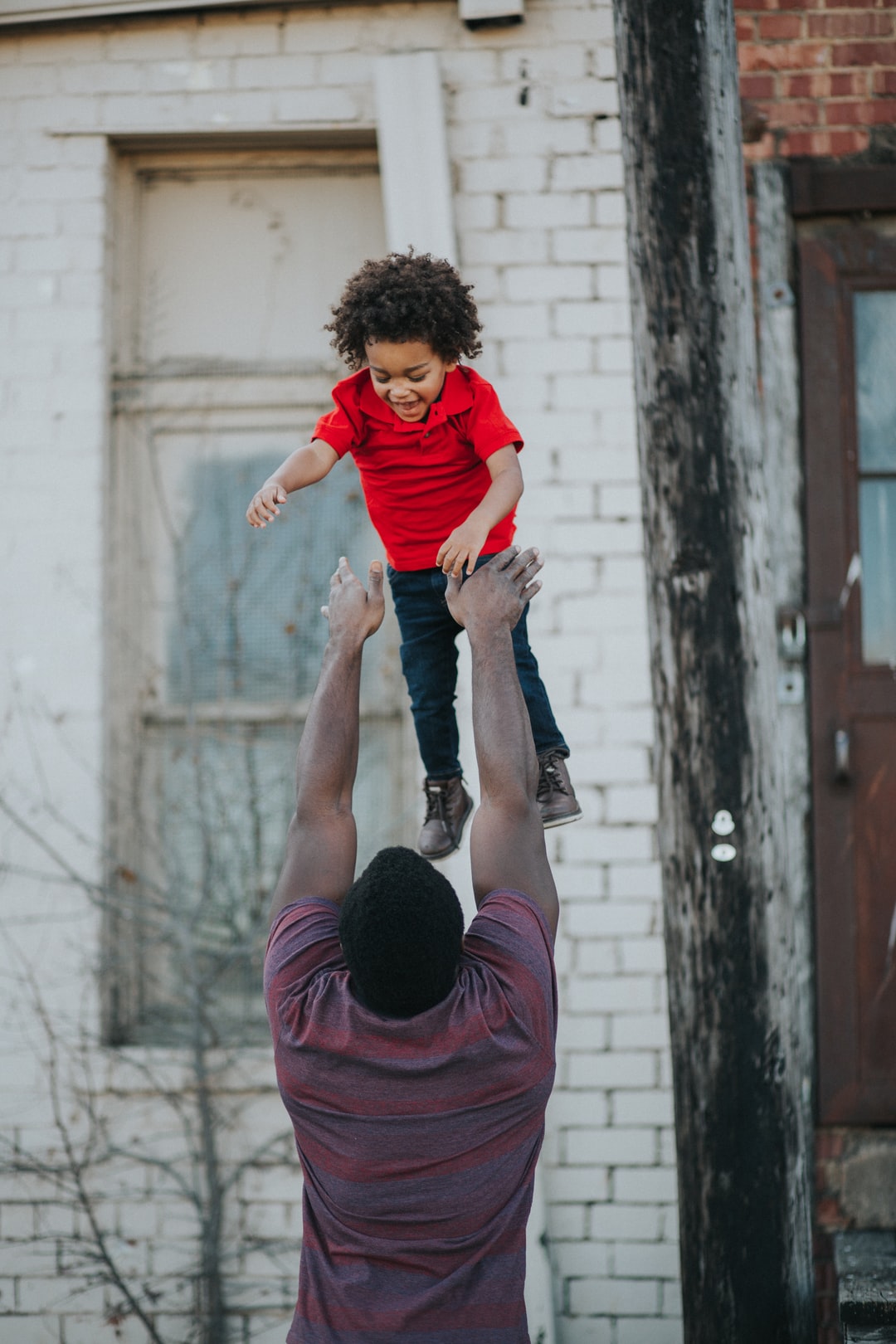


Distressful experiences can influence all areas of life.

Trauma in Kids & Teens is available to download
What is trauma?
Trauma is the psychological and emotional reaction to a very distressing situation. In addition to being traumatized by personally experiencing the incident, it is possible to experience trauma as a witness to the event, or being repeatedly exposed to the disturbing details of a situation.
We can think of trauma like a psychological bruise caused from a hit by an abnormally hard ball of stress. If we were hit on the arm by a baseball from a pitching machine, it would be very painful and leave a large bruise. That area will be extremely sensitive to the touch for quite a while and the bruise itself might take a long time to fade. Even the slightest amount of pressure on that bruise can be as painful as getting hit by the ball in the exact same spot.
Those who have this kind of psychological injury are so afraid of the bruise getting poked, even accidentally, they may unknowingly adapt new behaviors as they try to protect the bruise they have, and avoid getting another one.
What kind of behaviors do we see in kids & teens?
After exposure to a distressing situation, nightmares can interrupt sleep several times per night. Even weeks after the incident is in the past, sleeping can be a challenge due to residual anxiety related to the incident or fear it will happen again.
In teens especially, having “an attitude” or coming across as snarky is seen as a conscious decision to be a jerk. It usually isn’t. Tired people are grumpy people.
The brains of younger kids process these events differently than older kids or teens. Nightmares may appear to be unrelated to the incident, containing scary images or monsters instead of specific details of the child's experience. It is not uncommon for some kids to generalize these fears and bring them into daily activities. Some kids act-out the danger while playing, or draw monsters as a way to represent what they’re afraid of.
The perceived danger may have passed, but the brain is still on high-alert. It becomes a super paranoid watch-dog scanning the environment for any sign of trouble. It barks at everything. This may mean the person is easily startled or jumpy - or they may seem always on edge and unable to relax. Snapping or verbally lashing out for no obvious reason is not uncommon.
Intrusive thoughts or flashbacks can be triggered without notice. Flashbacks are biological time-machines that pull people back to the very moment they experienced the distress. Their brain doesn’t realize the danger is over so it gets the body hyped up and back into the fight-flight-or freeze mode.
This mode is a natural stress response and prepares us for survival. To conserve energy and stay focused, the body shuts down the functions that aren’t helpful in dangerous situations - like the ability to concentrate on math homework or follow a conversation.
Talking about the incident is often a trigger, so not wanting to talk about it is understandable. Staying away from places or people that may remind them of their experience is a common. Their goals is to avoid triggering flashbacks or getting that paranoid brain all riled-up.
Younger kids, usually those under 10, may cling to adults like a sloth to its favorite tree. Following a parent around, fearful of sleeping alone, or constantly checking on family members to make sure everyone in the house is safe are behaviors often seen in distressed little humans.
If these issues go on for a month or more, or if problems with grades, social and family interactions, or withdrawal from leisure activities become evident - please seek out a licensed mental health professional experienced in the treatment of trauma.

Trauma - Supporting Kids & Teens is available to download
What does it mean to help someone who has experienced trauma?
Helping a loved one after a traumatic incident is to offer intentional support in ways that allow them to heal.
Why is support important to those who have experienced traumatic stress?
Compared to adults, children and teens have a higher likelihood of developing long-term mental health issues like PTSD after exposure to traumatic events. Kids and teens are also more vulnerable to cognitive, psychological, and emotional issues, which can negatively impact their quality of life even as adults.
The most important factor in a child or teen’s ability to heal from trauma is having the support of their parents or adult caretakers.
How can a parent or adult caregivers strengthen their own ability to help a child or teen?
Be mindful of your own emotional and psychological well-being.
If an adult has experienced traumatic stress in their past, it is possible to be triggered by hearing about a child’s trauma.
Consider seeking support or therapy to better understand how the child’s situation currently impacts you and other family members.
Finding healthy ways to identify and express your emotions is an important part of self-care in times of change. And you’ll be modeling healthy emotional habits for the smaller humans around you. Multi-tasking!
How are kids or teens different after experiencing traumatic stress?
In younger children:
In teens:
They may view the world differently - A once safe and inviting world may now seem dangerous, untrustworthy.
Their self-image may shift - some kids and teens see themselves as having done something to cause the traumatic incident, or believe they somehow deserve it (e.g., It wouldn’t have happened if I did what I was told).
Some may see themself as weak for being unable to stop the incident.
What are practical ways a parent or adult caregiver can support a child or teen who has experienced traumatic stress?
Say:
What not to say:
Do:
Allow them to feel a sense of control in their life by offering choices like picking what video to watch or what clothes to wear.
Be patient as healing takes time.
Empathize with your child and active listening skills while keeping your emotions on the down low.
Reduce or limit viewing of news and media coverage of any distressing events.
Keep up with the usual family routines as much as possible to create a predictable (safe) environment.
Adapt or alter the routine if necessary for things like checking the closet for “monsters,” keep light on at night, or letting them sleep with extra stuffed animals.
Give kids and teens space to express their emotions verbally, through writing, or drawing. If they choose to share with you, be open to their perspective without labels or judgement.
Answer questions honestly and as appropriate for their age and development. Use neutral terms when discussing people and avoid using words along the lines of “good” or “bad.”
Allow both kids and teens to have ownership and control of their body and physical space. Respect their decision if they choose not to be hugged or touched.
Seek mental health support from a licensed provider if they are not improving within 30 days from the incident, or if their emotional response appears to be increasing in intensity. Speak with a mental health or medical provider who is knowledgeable about treating trauma in your child’s age group (pre-school age, elementary and middle school age, or high school aged teens).
A safe and stable environment with supportive caretakers is a vital part of the healing process after experiencing a distressing event.
Transitions, like changing schools or moving to a new neighborhood, additional stresses such as tension in the home, or pressure to get back to “normal” can make it difficult for kids and teens to progress in healing.
Sometimes a job change necessitates a move out of the area, or some other unavoidable issue come up. We cannot control all aspects of life, nor is it something we need to focus on. But being aware of how transitions and additional stressors negatively impacts those healing from traumatic experiences.
Your love and support is important all of the time - and especially during the difficult days.
If these issues go on for a month or more, or if problems with grades, increased intensity of emotions, negative social and family interactions, or withdrawal from leisure activities become evident - please seek out a licensed mental health professional experienced in the treatment of trauma.

Trauma Myths is available to download as a PDF
From action heroes to supervillains, the entertainment industry has painted an often skewed picture of trauma. Pop culture has added to this wave of misinformation helping half-truths and assumptions surf across social media platforms unchecked.
Incorrect beliefs can lead to stigma, and as with other mental health issues, stigma and shame can reduce the likelihood that someone will seek out professional support. We offer this brief look at the facts to help you better understand this issue and together stamp out the stigma of mental illness.
Myth 1 - Psychological trauma is not a real thing
What we refer to as “Psychological Trauma” is our brain’s response to experiencing or witnessing a very distressing event. The brain’s number one job is to keep us alive so it can travel around in luxury, safely tucked away in our head (skull). When we go through something that is so scary, so frightening that we fear for our physical and/or emotional safety, the brain reacts by going on high-alert.*
For some, that high-alert status fades over time with the brain going back to business as usual. For many others, the brain is not quite convinced that the danger has passed and it starts to acts a bit paranoid. Neurological changes occur in the physical structure of the brain and it can negatively impact our cognitive (thinking) abilities, and our behavior. Long-term issues include physical, mental, and emotional distress that interferes with every aspect of life.
Myth 2 - Only wartime Veterans experience psychological trauma
It was originally named “shell shock” after a psychologist noted severe reactions to war-related experiences during WWI. Nearly a hundred years later, and after a lot of research, we now understand that anyone at any age can experience a traumatic event. These events can include natural disasters, witnessing death or abuse, personally experiencing physical or emotional abuse, or a vehicle accident.
Myth 3 - You’ll grow out of it.
Humans don’t usually outgrow memories or experiences. Most adults can recall memories from around age 5 and older, like a fun birthday party, a favorite teacher or coach, or even the name of someone who was their third grade bully. Yes, rarely (less than 2.6%) a traumatic response results in dissociative amnesia, but a traumatic event doesn’t simply fade from our lives as we age - unfortunately.
Myth 5 - After experiencing trauma, humans change drastically and become violent or evil like the Joker, or Hannibal Lecter.
Responding to the world post-trauma can be very different compared to before pre-trauma behaviors. Anxiety, inability to sleep, nightmares, avoiding people and places associated with the trauma, and always being “on edge” are just a few things that may seem different.
However, experiencing a distressing event does not automatically translate to lashing out at others, or becoming abusive.
Myth 6 - Only very specific types of events are traumatic.
The human who experienced the event determines if it was traumatic or not - no one else. What can be no big deal to one person may feel life-threatening to another.
Overall, the event is not the most important factor - it is the brain’s response to the event that is the main focus.
Myth 7** - There is no treatment for treating trauma or Post-traumatic Stress Disorder (PTSD)
Although there is no “cure,” (because we cannot undo an experience) there are many different treatments that may reduce the psychological response to trauma, which can improve their quality of life. Learning ways to effectively manage the intense emotional and behavioral responses, reducing the anxious feelings, and improving sleep are just a few ways therapy can be helpful.
**Mental Health and Medical professionals use various approaches to treatment, or a combination of methods, depending upon the individual’s needs - as not everyone has the same symptoms or responds in the same way to treatment.
Some approaches with the strongest evidence include Cognitive Processing Therapy, Narrative Exposure Therapy, Cognitive Behavioral Therapy (CBT), Eye Movement Desensitization and Reprocessing (EMDR), Transcranial Magnetic Stimulation (TMS), Prolonged Exposure (PE), and medication therapy.
Before starting treatment for trauma please ensure that the professional you are working with is appropriately educated, trained, and licensed.
Myth - 8 It is best to talk about the trauma to get it out.
Individuals struggling with the after effects of trauma often avoid discussing details of their experience, or even avoid acknowledging it happened. Allow them to go at their own pace, in their own time.
Distressing events can make us feel vulnerable, unable to control a scary world, or even protect ourselves. Forcing someone to share their experiences before they are ready may reinforce the feelings of vulnerability.
Offer support, respect their needs, and listen with empathy when they’re ready to tell their story.
Myth - 9 Everyone exposed to trauma gets PTSD
Less than 1/3 of people who have experienced a traumatic event develop PTSD, with women usually twice as likely compared to men. It has been estimated that approximately 8% of the US population have experienced PTSD, which is way lower than the number of individuals who have faced trauma.
Myth - 10 When someone says they are “triggered,” it is just an act.
Being reminded of the traumatic episode, or being “triggered,” through things like photos or conversations may force the individual to re-experience the event through flashbacks or it can intensify feelings of anxiety or fear.
This is not to be confused with Exposure Therapy, which is conducted by trained professionals in collaboration with the client, and possibly their primary medical providers.
Beyond the Golden Rule: A parent's guide to preventing and responding to prejudice Handout/booklet by Teaching Tolerance, a project of the Southern Poverty Law Center. How to help and guide kids in their understanding of racial bias and discrimination.
Conversations for families about race and anti-bias from Anti-Defamation League
George Floyd, Racism, & Law Enforcement For families with kids ages 11 & up
Thinking about Social Justice through Crafts & Conversations For families with kids 3-12
Empowering Young People in the Aftermath of Hate In English and Español.
© 2021 Strive Family Resources, LLC